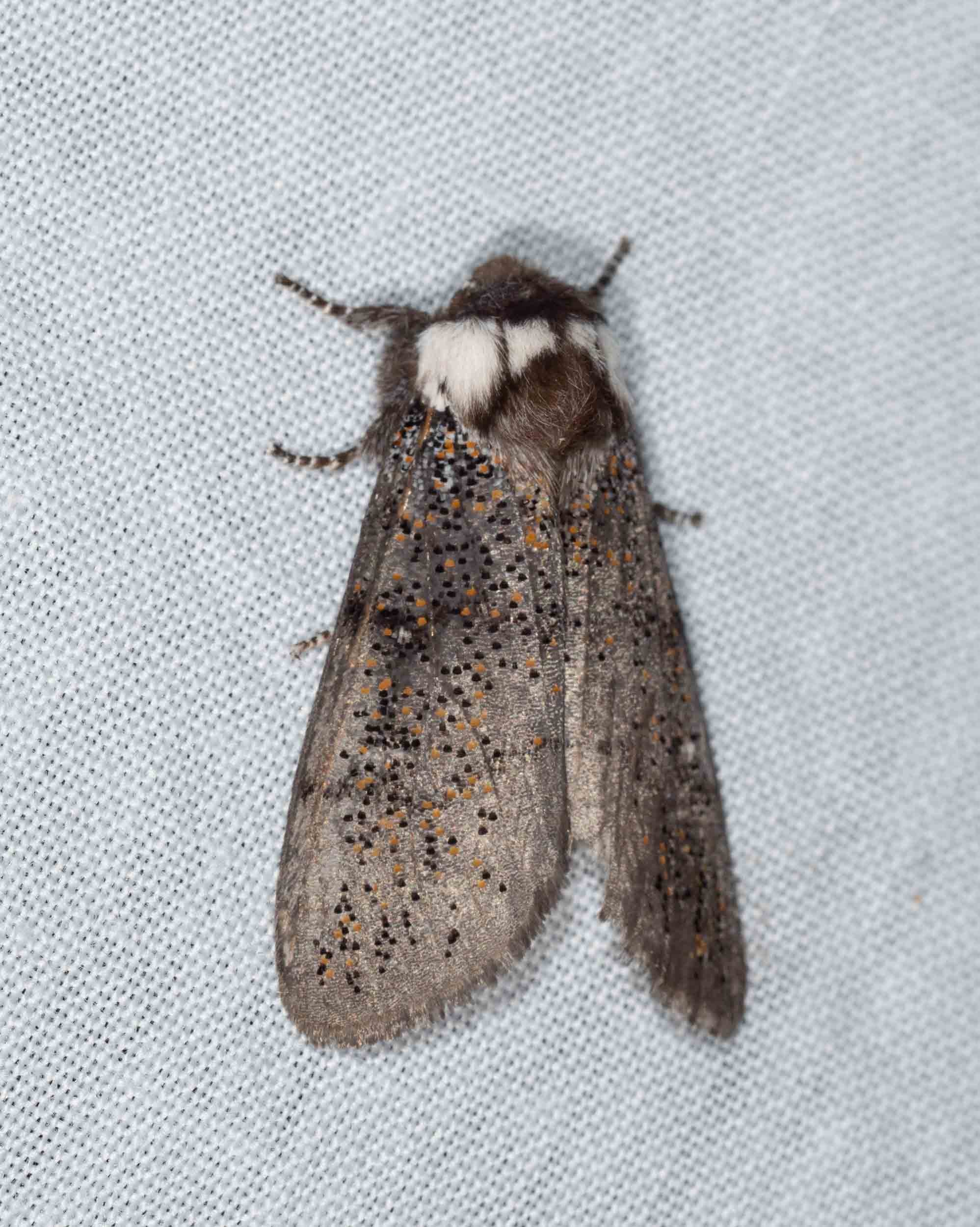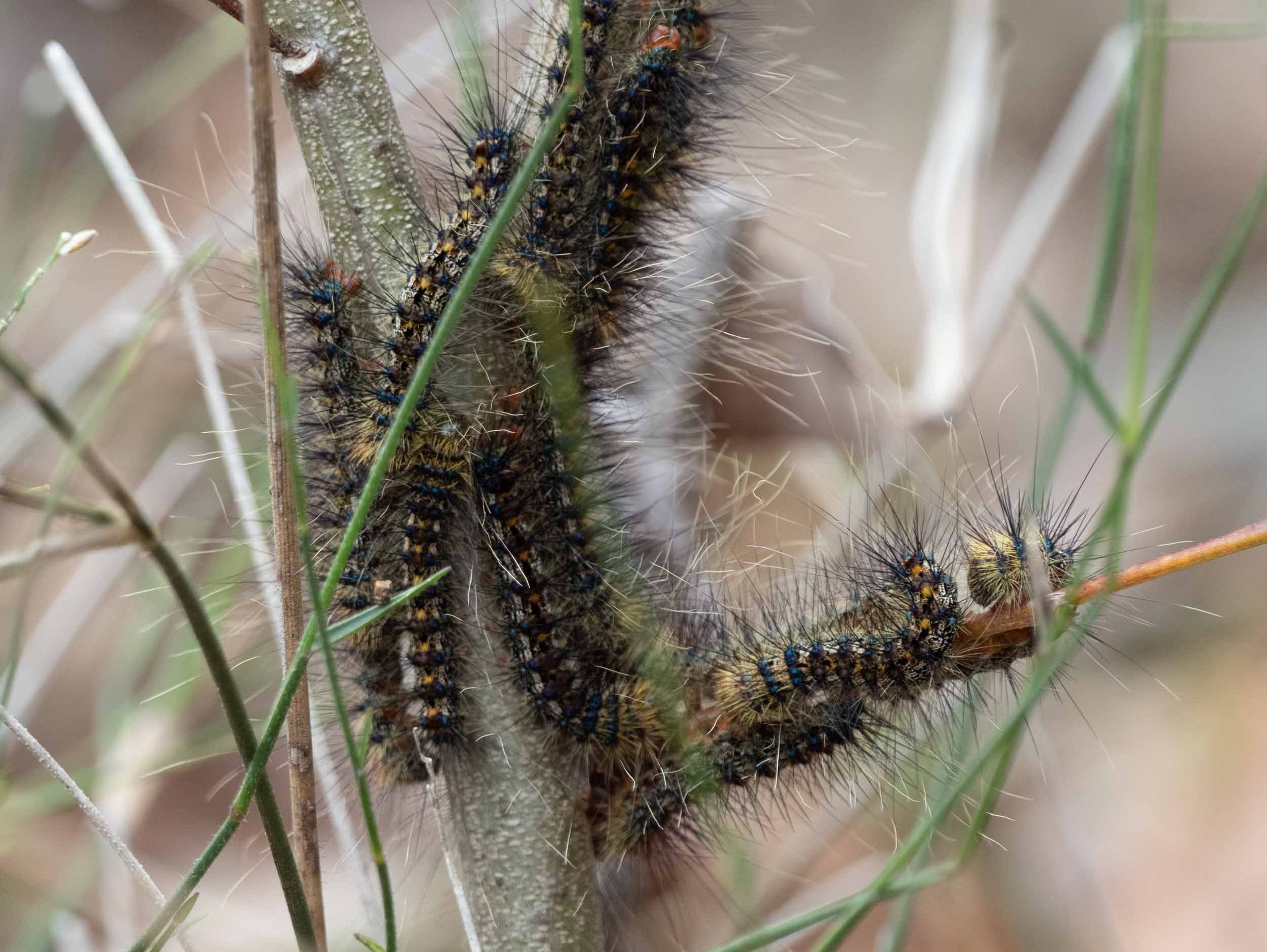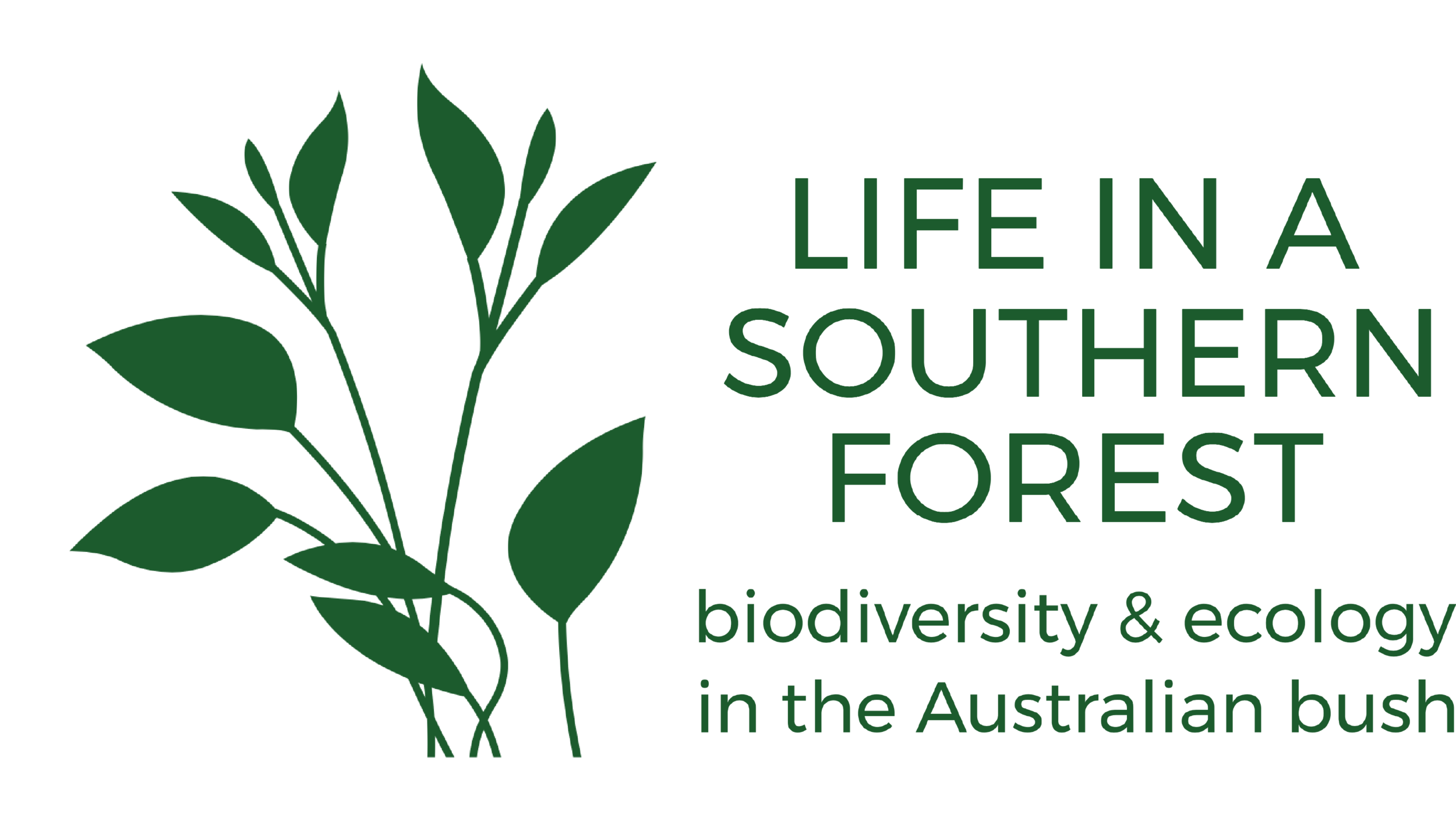
whistling moth caterpillar
Hecatesia fenestrata - the larva of the Whistling Moth, featured in our Summer Sightings blog. Seen here feeding on Dodder Laurel (Cassytha pubescens), on which it will continue to graze over winter. The adults have been reported to emerge in early spring.

Amphiongia chordophoides - another April lightsheet moth. This is the first time we’ve sighted this species in our forest. We appear to be at the southern limit of its distribution.

Boisduval's Autumn Moth
Oenosandra boisduvali - the male of this species, shown here, has an interesting speckled pattern on the forewings. It is a sexually dimorphic species - the female has white forewings with a narrow longitudinal stripe of the same pattern as the male’s wings. As befits its name, the adults make their first appearance in early autumn and are gone by the start of winter. The larva feeds at night on Eucalyptus leaves, hiding beneath the bark of the tree during the day.

Black Spot Moth
Epicoma melanospila - these caterpillars feed gregariously during the day. We found this large cluster in an Acacia longifolia bush. They disappeared suddenly in late autumn. Later stage larvae are reported to be solitary feeders and are widely scattered. The earliest sightings of the adults on iNaturalist are in late spring, so the larvae apparently feed right through winter. We often see the adults from early summer onwards on our lightsheets, displaying its eponymous wing pattern.




